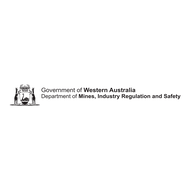The Mining Rehabilitation Fund became compulsory less than six months ago
| Date: | Wednesday, 24 December 2014 |
|---|
More than $1 billion has been returned to Western Australia’s mining industry since the introduction of the MRF
More than $1 billion has been returned to Western Australia’s mining industry since the introduction of the Mining Rehabilitation Fund (MRF), Mines and Petroleum Minister Bill Marmion announced today.
Prior to the MRF, environmental bonds were taken as security against companies failing to rehabilitate their sites following mine closure. The majority of these bonds are now being retired.
Acting DMP Executive Director Environment Dr Marnie Leybourne said that, prior to the MRF, around $1.2 billion was tied up in environmental bonds.
“It’s a real achievement to have returned such a large amount of money to the mining industry within six months of the MRF becoming compulsory,” Dr Leybourne said.
“This is money that companies are now able to invest in development or use for progressive rehabilitation of their tenements.”
Under the Mining Rehabilitation Fund Act 2012, bonds are retired once tenement holders register for the MRF and pay their annual levy, provided a DMP assessment doesn’t find that there’s a high risk of rehabilitation liability reverting to the State.
“The bonds system had several limitations, including that bonds could only be used to rehabilitate the specific tenements against which they were held, and the system provided no means to rehabilitate historical abandoned mines,” Dr Leybourne said.
“The cost of rehabilitation had also increased to the point where the value of bonds held was estimated to only cover around 25 per cent of the true cost of rehabilitation.
“As well as safeguarding the State against the expense of rehabilitating future abandoned mines, the MRF allows for the rehabilitation of legacy abandoned mine sites, which the State Government previously had no means of funding.”
Great Western Exploration, a Western Australian nickel, copper and gold exploration company, was one of the most recent companies to have its bonds retired, and helped push the amount over the $1 billion mark.
Managing Director Great Western Exploration Jordan Luckett explained that under the previous bond system, small companies like theirs were required to initially commit twice the amount of capital for rehabilitation as was required as they had to post the rehabilitation value as a bond as well as fund the actual rehabilitation work.
Mr Luckett said that having capital tied up in bonds for long periods of time increased the upfront cost of drilling. But the MRF allows them to manage their capital more efficiently, hopefully meaning the next big discovery is that little bit closer.
“The benefit of the MRF in our circumstance is that it allows us to more efficiently use our capital and not have large amounts tied up in bonds, sometimes for a number of years,” Mr Luckett explained.
Mr Luckett also saw the MRF’s ability to fund rehabilitation of legacy sites as beneficial to the industry and hopes it helps build sustainable relationships with the community.
“It is appropriate that the industry help fund the clean-up of legacy areas and prevent them re-occurring in the future so that a sustainable relationship with the community is maintained.
“I think over time it will build trust with the wider community, especially if there is a transparent system in place that guarantees the rehabilitation of mining areas and the cost is covered by the mining industry.”
Mr Luckett said that while Great Western Exploration is committed to establishing a social licence to operate, the MRF provides additional incentive to complete progressive rehabilitation to try and stay below the MRF payment threshold.

